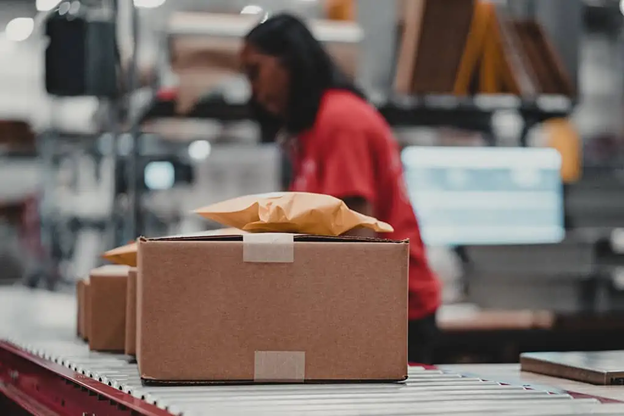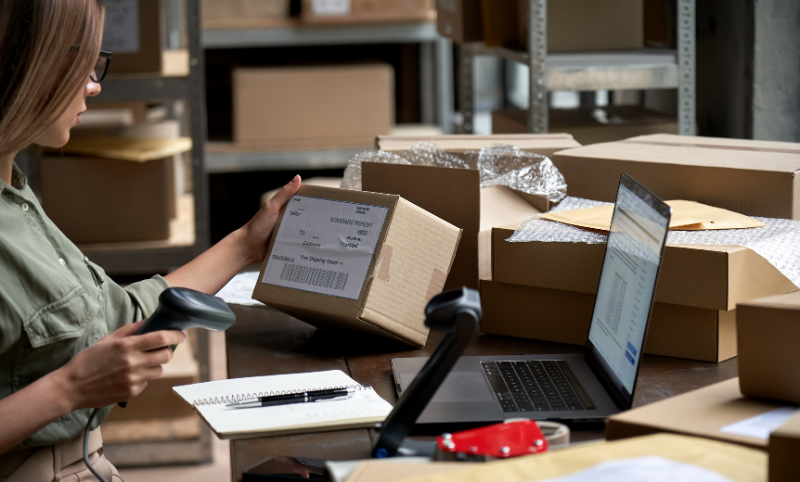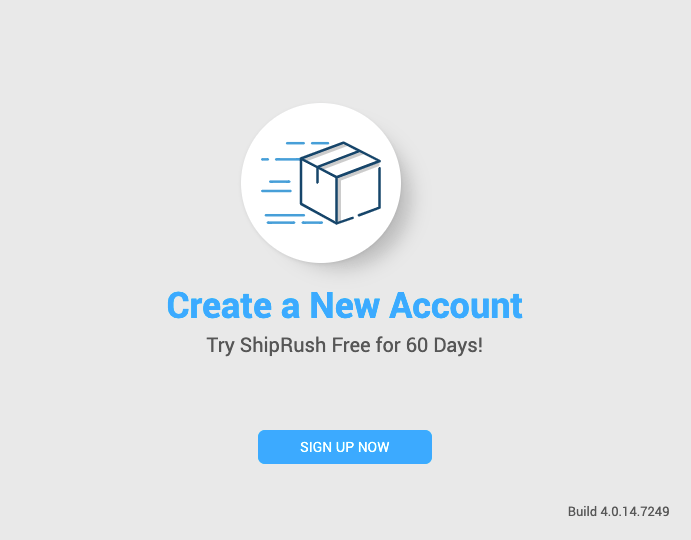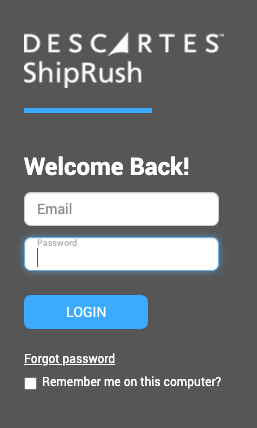Key Takeaways
- Multi-carrier shipping strategy should include a mix of national, regional, and last-mile carriers.
- This strategy allows you to rate shop different carriers and services to find the fastest, cheapest shipping.
- With multi-carrier shipping software, you’re not just printing labels. You’re using technology to make smart, informed decisions every day, ensuring every order is delivered efficiently and affordably.

Multi-carrier ecommerce shipping strategy is a game-changer. Instead of sticking to just one carrier, imagine having a whole team, each member excelling in different areas. That’s what using multiple carriers is like — you get to match each order with the carrier that’s just right. This means faster deliveries, often at a better cost, and who doesn’t love that?
This shipping strategy is something more and more ecommerce businesses are using. Why? Because it opens up a world of options and enhances order fulfillment efficiency. You’re not just shipping orders; you’re tailoring the delivery of each product to meet your customers’ needs. And when you nail that perfect delivery, that’s when you see those happy customer reviews rolling in.
How Multiple Carriers Help You Exceed Customer Expectations
Think about the last time you shopped online. What made you pick one product over another? If you’re like most people, shipping speed is a big factor, and quick delivery can be the deal maker. With multiple carriers at your disposal, you can always choose the fastest, cheapest shipping option, giving your customers another reason to love you.
Now, we can all agree that fast shipping is important and sounds great, but what about the costs? Here’s where the real magic of having various carriers comes in. You can weigh your options and choose one that’s friendly to your budget without slowing down your deliveries. This balancing act is crucial for keeping both your customers and your profit.
But that’s not all. What if your customers could choose between paying less and getting their order faster? By offering different delivery options from various carriers, you cater to everyone’s preferences — some might opt for speed, others for savings.
And here’s a little tech tip: using a tool like Descartes ShipRush™ lets you compare rates from different carriers in real time, all on one screen. That way, you get the fastest, cheapest shipping to keep your delivery promise, which is a surefire way to boost customer satisfaction and loyalty.
Navigating the World of Different Carriers

Have you ever noticed how each delivery service promises something different? Each has its own perks, so the challenge is choosing the right one at the right time. That’s where a multi-carrier strategy comes into play. It’s about being quick on your feet, picking the carrier that’s not just fast or cheap but also offers goodies such as signature capture services.
But let’s talk about costs. Working with different carriers means dealing with all sorts of pricing, and sometimes those hidden fees can catch you off guard. Comparing options side by side with a shipping solution helps you spot the best deal and dodge those sneaky extra charges.
Here’s where smart tech steps in. Shipping automation rules are your secret weapon: they automatically rate shop, select, and apply the right option for you. With shipping software like Descartes ShipRush, you’re not just getting shipping labels — you’re getting a decision-maker. Imagine a system that automatically picks the fastest, cheapest shipping option for you. That’s some next-level efficiency!
But what about the discounted rates you already have? Don’t worry — If you’ve negotiated special rates with carriers, those deals are part of the mix, too. This means you always see the best rates, without any hidden surprises.
Mastering the Last-Mile Challenge
Think of last-mile delivery as the final sprint in a relay race. You need to get across the finish line without stumbling. Choosing from a variety of carriers actually means choosing the best runner for the final leg. This leads to fewer delays and smoother deliveries right to the doorstep.
Add Last-Mile Couriers to Your Shipping Strategy
Prices change based on where and when you’re shipping something, so having multiple carriers means you can pick the one that offers the best deal for each specific zone. It’s smart to add last-mile couriers to the mix — sometimes, they can offer both speed and savings above large national carriers.
Here’s where technology helps you again. With multi-carrier shipping software, your automation rules always pick the best option for each delivery, selecting last-mile couriers where it makes sense. It’s like having a super-smart coach who knows which teammate to put in.
And don’t forget, if you’ve negotiated special rates, the tools can factor those in too. It’s all about controlling costs and keeping your delivery promise in that tricky last mile.
Keeping It Consistent with Regional Carriers
Delivering consistently across different zones can be tricky because some areas are just harder to reach. That’s where having a variety of carriers is a game-changer. You get to choose the one who’s the best at delivering in each specific area, ensuring your packages always arrive on time, no matter where they’re going.
But what about delivery disruptions and coverage issues? They can really hurt your customer satisfaction and budget. With multiple carriers, you can sidestep these problems: pick the ones known for their reliability in tricky areas, and you’re less likely to face unexpected problems.
Add Regional Carriers to Your Shipping Strategy
Strategizing with different regional carriers helps with this. It’s like having a team of experts, each knowing the ins and outs of delivering on their own turf. This keeps your service smooth and taps into the best rates. Try adding a regional carrier from where you ship the most orders and use your automation rules to make sure that carrier is selected whenever it makes sense.
Navigating the Rush of Peak Seasons

Peak seasons are like the ecommerce Olympics — everyone’s rushing to get their products out, and delivery times get bogged down. This is where having a variety of carriers comes to the rescue — you can quickly pivot to the best-performing carrier when it’s super busy and use others when it’s slow.
But peak seasons often mean extra costs — think overtime and resource surcharges. That’s expected, right? Well, with multiple carriers in your toolkit, you can cut costs on shipping and offset those expenses. Choose the ones offering the best deals during these high-pressure times. This way, you can handle more orders without your costs skyrocketing.
What about striking a deal in advance or buying in bulk for these busy times? Here’s another trick: use shipping software with pre-negotiated rates for multiple carriers to secure favorable prices and guarantee reliable shipping services. This is how you avoid those last-minute price jumps and expensive retail shipping prices, especially during peak when everyone’s scrambling.
Perfecting the Balance with Multi-Carrier Shipping
To make it in the ever-changing world of ecommerce, keeping customers happy and using resources wisely is key. The landscape is always shifting, as are the customers’ expectations and needs, but don’t worry — perfecting the balance of ecommerce shipping is possible. It’s all about blending strategy, tech smarts, and a focus on the customer.
Multi-carrier shipping is an easy, quick win: it’s your all-star team that’s always ready to adapt, ready to change tactics as the market and consumer demands evolve. This approach is a must-have for any ecommerce business aiming to grow in today’s competitive world. With the power to balance speed, cost, and reliability, it’s not just a tool — it’s your ticket to success.

Alex Selwitz
Alex Selwitz is the Director of SEO for Red Stag Fulfillment, an eCommerce fulfillment warehouse that was born out of eCommerce. He has years of experience in eCommerce and digital marketing. In his free time, Alex enjoys playing guitar and learning about new trends in the digital world.









